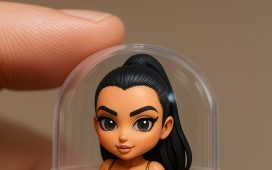
Richard III is long believed to have been responsible for the murder of the Princes in the tower (Image: GETTY)
History may be a thing of the past – but for renowned geneticist, archaeologist and DNA detective Dr Turi King, there are secrets which are tantalisingly close to being uncovered.
In 2012, under what is now a car park in Leicester, an archaeological dig uncovered some human remains.
Rapidly it became apparent that this was a find of some significance, given the skeleton, discovered during an excavation of the Greyfriars Friary site, bore signs consistent with historical accounts of none other than Richard III.
Telltale signs included a curved spine, suggesting scoliosis, and injuries believed to have been inflicted during the Battle of Bosworth in 1485.
However, scientific verification was crucial, and this is where Dr King’s pioneering genetic analysis came in.

The fate of the two boys has been a mystery for centuries (Image: GETTY)
The Director of the Milner Centre for Evolution at the University of Bath is preparing to deliver a talk at New Scientist Live at ExCeL London on Saturday entitled Cold Cases: Genetic Genealogy meets History and Forensics.
And as she explained, in the case of the Plantagenet monarch, a positive identification was far from straightforward.
Dr King told Express.co.uk: “First and foremost, DNA is used alongside all the other strands of evidence, so it’s equivalent to a historic missing persons case.
“So you bring all of the strands of evidence together. Because of the way our DNA is inherited, the vast majority of our DNA is this very, very complex mixture of just some of our many ancestors, and that’s because of the way the vast majority of our DNA is passed down.”
In Richard III’s case, mitochondrial DNA was crucial, Dr King said.
She explained: “Women pass it down to all their children, but only daughters pass it on.”
Richard III’s car park burial site opens to public
Therefore Richard got it from his mother, Cecily Neville, Duchess of York, who also passed it down to his eldest sister, Anne of York.
She then passed it down through multiple generations of female ancestors to a Canadian man named Michael Ibsen, who already knew he was related to the former monarch.
In Richard III’s case, mitochondrial DNA was crucial, Dr King said.
She explained: “Women pass it down to all their children, but only daughter pass it on.”
Therefore Richard got it from his mother, Cecily Neville, Duchess of York, who also passed it down to his eldest sister, Anne of York.
She then passed it down through multiple generations of female ancestors to a Canadian man named Michael Ibsen, who already knew he was related to the former monarch.
She also remains fascinated by another unsolved mystery related to Richard III – the fate of the Prince in the Tower, the two nephews he supposedly had murdered in order to get his hands on the crown of England.
Skeletal remains were discovered in the Tower of London in 1674, and these remains have long been reputed to be those of Edward V and his younger brother Richard, Duke of York.
They were subsequently reburied four years later on the orders of Charles II, before being disinterred in 1933 and examined by scientists who concluded they belonged to two children roughly the same ages as the princes
Now, believes Dr King, a final answer could be within our grasp.
She said: “We’ve now got Richard’s DNA, which could be used. The first thing you do is lay out the remains and do radiocarbon dating, because if the right dates don’t come back, that’s it, you don’t continue anymore.”
However, If the dates fit it would open the door for “an entire holistic project bringing all of the strands of evidence together” which could solve the mystery once and for all.
Nevertheless, Dr King is also sceptical about setting too much store by ancestry.
She explained: “I sometimes find myself shouting at Who Do You Think You Are?
“The chance of somebody with broadly British ancestry born in the 1970s not being descended from Edward III for example is incredibly tiny. We are all related. We’re all related to royalty. We’re all related to each other. It is as simple as that.
She also thinks it is important for anyone seeking to find out more about where they come from to think carefully before they get the ball rolling, given there is a possibility of “opening Pandora’s box”.
Dr King said: “You just don’t know what you’re going to get on the other side of things. So I think my question is always, ‘what is it you’re hoping to answer?’ And then secondly, just be aware you could find something you weren’t expecting.”
Dr Turi King appears at New Scientist Live on Saturday











